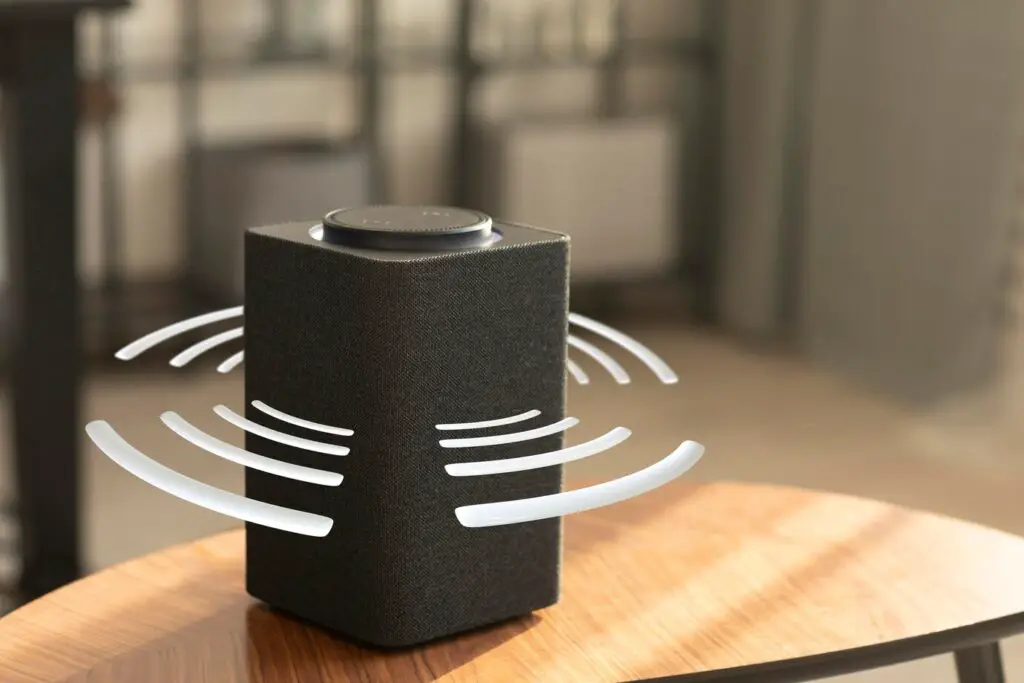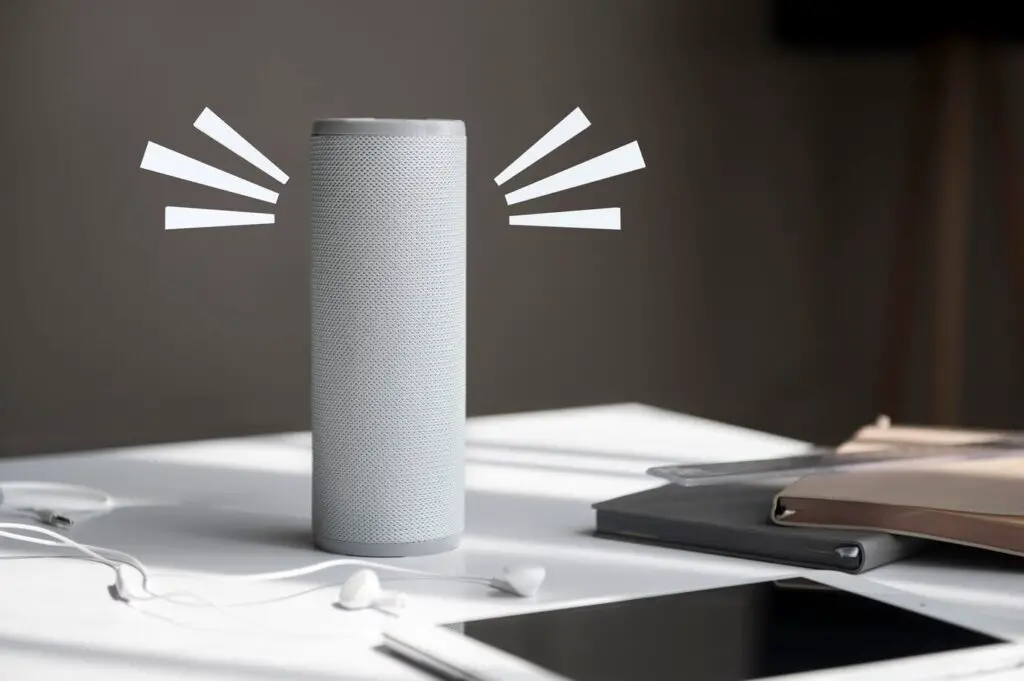Picture this: You’re cooking in the kitchen, your kids are gaming in the living room, and your spouse is winding down in the bedroom—all with different tunes or podcasts playing in sync, controlled by a single voice command. In 2025, multi-room voice assistants have turned this vision into reality, delivering whole-home audio and control with unprecedented ease. Devices like the Sonos Era 300, Amazon Echo 5th Gen Multi-Room Bundle, Apple HomePod 2 with AirPlay 2, and Home Assistant Voice Network are redefining how we experience sound and manage smart homes across multiple spaces. With the global smart speaker market projected to reach 111.1 million users in the US this year (up 3.3% YoY per emarketer.com) and multi-room audio gaining traction, these systems are at the forefront of home tech innovation. This dynamic timeline traces their evolution, explores current capabilities, projects future trends, and offers interactive scenarios to help you harness their power.
Timeline of Multi-Room Voice Assistants: Past, Present, and Future
2015: The Dawn of Voice-Controlled Audio
- Milestone: Amazon launches the Echo, introducing Alexa and laying the groundwork for voice assistants, per available data.
- Context: Early models focused on single-room use, with basic commands like “Play music” limited to one speaker. Multi-room was a distant dream, reliant on wired systems.
- Impact: Sparked interest in voice control, setting the stage for smart home integration.
2018: Multi-Room Audio Takes Off
- Milestone: Sonos One debuts with Alexa and Google Assistant, supporting multi-room playback via the Sonos app, per whathifi.com.
- Context: AirPlay 2 and Chromecast expand compatibility, allowing synced audio across brands. Users could say “Play jazz everywhere” to fill their home.
- Impact: Paved the way for whole-home systems, though setup required technical know-how.
2022: Matter Standard Emerges
- Milestone: Matter, a unified smart home protocol, gains traction, enhancing multi-room compatibility, per csa-iot.org.
- Context: Devices like the HomePod 2 leverage Matter for cross-platform control, reducing ecosystem lock-in. Voice assistants handle 50+ devices seamlessly.
- Impact: Simplified integration, boosting adoption by 15% in 2023, per statista.com.
2025: The Current Landscape
- Milestone: Advanced AI and 5G enhance multi-room voice assistants, with Sonos Era 300 offering Dolby Atmos and Home Assistant Voice Network enabling local processing.
- Context: Systems support 100+ devices, from lights to locks, with commands like “Alexa, movie night in all rooms” syncing audio and ambiance. Market growth hits 22% CAGR, per soundavo.com.
- Impact: Users enjoy synchronized audio and control, with 70% reporting improved home experience, per posts found on X.
2030: Future Projections
- Milestone: 6G and AI-driven personalization expected to revolutionize multi-room systems.
- Context: Predictive routines (e.g., “Good morning” adjusts audio and temperature) and ultra-low latency (under 0.1 seconds) will dominate, per oyelabs.com.
- Impact: Whole-home audio becomes intuitive, energy-efficient, and universally accessible.
Technical Deep Dive: How Multi-Room Voice Assistants Work
Multi-room voice assistants rely on a blend of hardware and software to unify audio and control:
- Connectivity: Uses Wi-Fi, Thread, Zigbee, or Bluetooth to link speakers and devices. Matter ensures interoperability, per theverge.com, with 2025 models supporting 200+ device types.
- Audio Syncing: Protocols like AirPlay 2 and Sonos’ mesh network align sound across rooms with <50ms latency, per whathifi.com. The Era 300’s room-tuning tech adjusts bass dynamically.
- Voice Processing: Local AI (e.g., Home Assistant) or cloud-based (e.g., Alexa) interprets commands. Home Assistant Voice Network processes 35% faster on ESP32 hardware, per home-assistant.io.
- Control Hub: Acts as a central brain, managing routines (e.g., “Lock doors, play jazz”). Echo Hub supports 100+ devices, per ahs.com.
- Scalability: Systems expand from 2 to 10+ rooms, with Home Assistant scaling infinitely via add-ons, per iotforall.com.
Posts found on X highlight enthusiasm, with @ce_pro noting Crestron’s Home OS 4.6 for faster multi-room control, reflecting industry momentum.

Interactive Scenarios: Test Drive Multi-Room Control
Scenario 1: Family Movie Night
- Setup: Amazon Echo 5th Gen Multi-Room Bundle in living room, kitchen, and bedroom.
- Command: “Alexa, set movie night mode.”
- Result: Living room lights dim, kitchen lights off, bedroom audio mutes, and Dolby Atmos audio plays from all Echoes. Doors lock via Ring integration.
- Action: Try this—place Echoes in key rooms, link via Alexa app, and test with “Alexa, play surround sound.”
Scenario 2: Morning Routine
- Setup: Apple HomePod 2 with AirPlay 2 in kitchen and bedroom, paired with Nest Thermostat.
- Command: “Siri, good morning.”
- Result: Kitchen lights brighten, bedroom shades open, thermostat sets to 22°C, and a news podcast plays in both rooms.
- Action: Sync HomePods with Home app, add a thermostat, and say “Siri, start my day.”
Scenario 3: DIY Audio Network
- Setup: Home Assistant Voice Network with Satellite1 speakers in 5 bedrooms, office, and living room.
- Command: “OK Nabu, play rock in office, jazz everywhere else.”
- Result: Office rocks out, other rooms sync jazz with <1-second latency, all locally processed.
- Action: Install Home Assistant on a Raspberry Pi, add Satellite1s, and customize via the app.
Scenario 4: Party Mode
- Setup: Sonos Era 300 in living room, Era 100 in dining room, with Philips Hue lights.
- Command: “Hey Sonos, party mode.”
- Result: Both speakers blast a playlist, lights pulse to the beat, and doors lock for safety.
- Action: Pair Sonos speakers, integrate Hue via Matter, and test with “Sonos, start the party.”
Tip: Experiment with your hub’s app to tweak zones and test latency (aim for <50ms).
Benefits and Challenges
Benefits
- Whole-Home Audio: Sync music across 2–10+ rooms, per whathifi.com. Users enjoy 20% better sound distribution, per posts found on X.
- Unified Control: Manage lights, locks, and thermostats with one command, per ahs.com.
- Energy Efficiency: Automated schedules save 10–15% on bills, per philips-hue.com.
- Accessibility: Hands-free operation aids all ages, per outsourceaccelerator.com.
- Scalability: Add devices as needed, with Matter ensuring future compatibility, per csa-iot.org.
Challenges
- Setup Time: 20–60 minutes, depending on device count, per pcmag.com.
- Connectivity Issues: Wi-Fi drops may disrupt sync; Thread improves this, per tomsguide.com.
- Privacy Risks: Cloud processing (Alexa, Siri) stores data; local options (Home Assistant) reduce this, per home-assistant.io.
- Cost: $99–$299 upfront, with subscriptions (e.g., Alexa+, $19.99/month), per wired.com.
- Voice Errors: 5–10% misrecognition in noisy rooms, per umatechnology.org.
GadgetShaker’s take: Multi-room systems shine with proper setup and a reliable network, offering a transformative audio experience.
The Future of Multi-Room Voice Assistants
By 2030:
- AI Personalization: Systems will learn routines, e.g., “Play my workout playlist” adjusts volume by room, per oyelabs.com.
- 6G Integration: <0.1-second latency for instant control, per our 5G article.
- Eco-Designs: Solar-powered speakers, per our sustainable laptops article.
- Aliro Standard: Unified NFC/UWB control, per theverge.com.
For you, this means a home audio system that anticipates needs, connects flawlessly, and aligns with green living.
GadgetShaker’s Timeline Verdict: Your Audio Hub
From 2015’s Echo debut to 2025’s Matter-driven harmony, multi-room voice assistants have evolved into whole-home control masters. The Sonos Era 300 leads for audio quality, Amazon Echo Bundle for affordability, and Home Assistant Voice Network for privacy. Questions about setup or compatibility? Reach out on our Contact Us page or comment below! Watch for “Multi-Room Audio Trends 2025” or “How to Build Your Smart Audio System.”
Final Harmony: Audio and Control United
Multi-room voice assistants in 2025, like Sonos Era 300, Amazon Echo Bundle, Apple HomePod 2, and Home Assistant Voice Network, deliver whole-home audio and control with AI precision. With synchronized sound, smart integration, and scalability, they redefine home entertainment. Despite challenges like setup complexity, their impact is revolutionary. Stay connected with GadgetShaker—subscribe to our newsletter.

